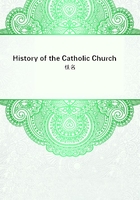
第326章
THE PENAL LAWS
Burke, /The Irish Priests in the Penal Times (1660-1760)/, 1914 (a valuable book, based on the State Papers preserved in the Record Office, the Bodleian Library and the British Museum). Curry, /An Historical and Critical Review of the Civil Wars in Ireland from the Reign of Queen Elizabeth to the Settlement of King William III./, 2 vols., 1786. Klopp, /Der Fall des Hauses Stuart u.s.w./, 14 Bde., 1875-88. Madden, /Historical Notice of the Penal Laws against Roman Catholics/, 1865. Lecky, /History of Ireland in the Eighteenth Century/, 5 vols. (new imp., 1913). Parnell, /History of the Penal Laws/, 1808. Id., /An Historical Apology for the Irish Catholics/, 1807. /Works and Correspondence of Edmund Burke/, 8 vols., 1851. Butler, /Historical Memoirs of English, Irish, and Scotch Catholics/, 4 vols., 1819. Scully, /The Penal Laws/, 1812. Murray, /Revolutionary Ireland and its Settlement/, 1911.
When the Irish leaders entered into correspondence with General Ginkle they were by no means reduced to the last extremity. The situation of the besiegers was rendered difficult by the approach of winter, and there was a danger that the city might be relieved at any moment by the appearance of a French fleet in the Shannon. Hence to avoid the risks attendant on the prolongation of the siege and to set free his troops for service on the Continent, where their presence was required so urgently, General Ginkle was willing to make many concessions.
Before the battle of Aughrim William had offered to grant the Catholics the free exercise of their religion, half the churches in the kingdom, and the moiety of the ecclesiastical revenues.[1] But the position of both parties had changed considerably since then, and Sarsfield and his companions could hardly expect so favourable terms.
They insisted, however, on toleration, and though the first clause of the treaty dealing expressly with that subject was drafted badly, they certainly expected they had secured it. In addition to the military articles the Peace of Limerick contained thirteen articles, the most important of which were the first, and the ninth. By these it was provided that the Catholics should enjoy such privileges in the exercise of their religion as is consistent with the laws of Ireland, and as they did enjoy in the reign of Charles II.; that their Majesties as soon as their affairs should permit them to summon a Parliament would endeavour to procure for Irish Catholics "such further security in that particular as may preserve them from any disturbance upon account of their religion;" and that the oath to be administered to Catholics should be the simple oath of allegiance to William and Mary. "Those who signed it [the Treaty]," writes Lecky, "undertook that the Catholics of Ireland should not be in a worse position, in respect to the exercise of their religion, than they had been in during the reign of Charles II., and they also undertook that the influence of the government should be promptly exerted to obtain such an amelioration of their condition as would secure them from the possibility of disturbance. Construed in its plain and natural sense, interpreted as every treaty should be by men of honour, the Treaty of Limerick amounted to no less than this."[2] The Treaty was ratified by the sovereigns in April 1692, and its contents were communicated to William's Catholic ally, the Emperor Leopold I. (1657-1705) as a proof that the campaign in Ireland was not a campaign directed against the Catholic religion.
The king was, therefore, pledged to carry out the agreement, and by means of the royal veto and the control exercised by the English privy council he could have done so notwithstanding the bigoted fanaticism of the Protestant minority in Ireland. Nor can it be said that the conduct of the Irish Catholics afforded any pretext for denying them the rights to which they were entitled. Once their military leaders and the best of their soldiers had passed into the service of France there was little danger of a Catholic rebellion, and during the years between 1692 and 1760, even at times when the Jacobite forces created serious troubles in Scotland and England, the historian will search in vain for any evidence of an Irish conspiracy in favour of the exiled Stuarts. The penal laws were due solely to the desire of the Protestant minority to wreak a terrible vengeance on their Catholic countrymen, to get possession of their estates, to drive them out of public life, by excluding them from the learned professions and from all civil and military offices, to reduce them to a condition of permanent inferiority by depriving them of all means of education at home and abroad, to uproot their religion by banishing the bishops and clergy, both regular and secular, and in a word to reduce them to the same position as the native population of the English plantations in the West Indies.